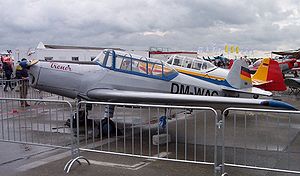
The Extra Flugzeugbau EA300 is a two-seat aerobatic monoplane capable of Unlimited category competition. It was designed in 1987 by Walter Extra, a German aerobatic pilot, and built by Extra Flugzeugbau.

The Yakovlev Yak-18 is a tandem two-seat military primary trainer aircraft manufactured in the Soviet Union. Originally powered by one 119 kW (160 hp) Shvetsov M-11FR-1 radial piston engine, it entered service in 1946. It was also produced in China as the Nanchang CJ-5.

The Zlín Z 42 is a single-engine two-seat Czechoslovakian trainer aircraft manufactured by Moravan Otrokovice. A developed version, the Z 142, is the most popular aircraft variant in the manufacturer's aircraft line.

The L-13 Blaník is a two-seater trainer glider produced by Let Kunovice since 1956. It is the most numerous and widely used glider in the world. In United States Air Force Academy service, it is designated TG-10C and was used for basic flight training up to 2012.

The Zlin Z-50 is an aerobatic sports airplane built by the Czechoslovakian company Zlin Aircraft.

The Zlín Z 43 is a Czech four-seat light aircraft. A development of the two-seat Zlín Z 42, it is a low-wing monoplane. A developed version, the Zlín Z 143 remains in production.
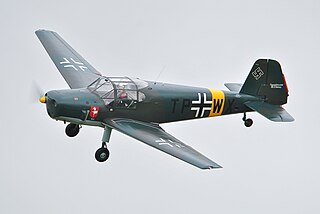
The Bücker Bü 181 Bestmann is a twin-seat single-engine aerobatic monoplane trainer aircraft designed and built by the German aviation company Bücker Flugzeugbau. It was extensively operated by the Luftwaffe throughout the Second World War. The Bü 181 was named Bestmann after a German maritime term designating a member of the deck crew on coastal or fishing vessels.

ENAER T-35 Pillán is a Chilean propeller-driven basic trainer aircraft. The student and the instructor sit in tandem. Production ceased in 1991 after 7 years but restarted briefly in 1998.
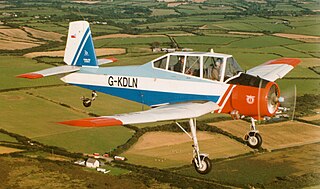
The Zlin Z-37 Čmelák, also known as LET Z-37 Čmelák is an agricultural aircraft which was manufactured in Czechoslovakia. It is powered by a Soviet-built Ivchenko reciprocating engine. The aircraft is used mainly as a cropduster.

The PZL-106 Kruk is a Polish agricultural aircraft designed and built by WSK PZL Warszawa-Okęcie.

The Avia BH-11 was a two-seat monoplane sport aircraft designed and produced by the Czechoslovakian aircraft manufacturer Avia.
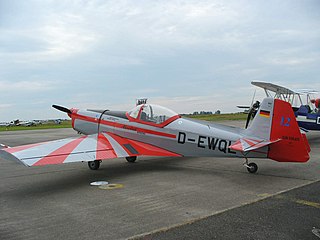
The Zlin Z-526 Akrobat is a Czech sports plane used in aerobatics.

The AS/SA 202 Bravo is a two to three-seat civil light aircraft jointly designed and manufactured by the Swiss company Flug- und Fahrzeugwerke Altenrhein (FFA) and the Italian company Savoia-Marchetti. The aircraft was designated the AS 202 in Switzerland, and the SA 202 in Italy.
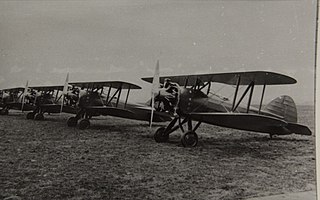
The Avia B.122 was a Czechoslovak single-seat biplane aerobatic aircraft, which was developed in the mid-1930s. It saw some service in the first years of World War II.

The Zlín Z-XII is a Czechoslovak two-seat sports aircraft, and the first major design success by the Zlínská Letecká Akciová Společnost (Zlín) aircraft manufacturing company, after its founding in Otrokovice after the takeover by the Bata Group.
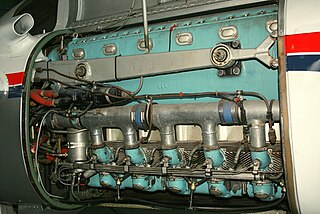
The Avia M 337 is an inverted six-cylinder air-cooled inline engine. It was developed by the Czechoslovak company as a six-cylinder derivative of the four-cylinder M 332 engine, going into production in 1960. An unsupercharged version of the M 337 is designated as the LOM M137. Production transferred to Avia in 1964, and to Letecke Opravny Malesice (LOM) in 1992.

The Zlin 22 Junak was a 1940s two-seat cabin monoplane, developed from the Zlin 381.
The Podesva Trener, also called the Trener Baby, is a Czech ultralight aircraft that was designed by Tomas Podesva and produced by Podesva Air of Uničov. The aircraft a faithful 80% scale reproduction of the Zlin 126 and is supplied as plans, as a kit for amateur construction or as a complete ready-to-fly-aircraft.
The Stephens Akro is a single engine monoplane designed in the United States for aerobatic competitions. It first flew in 1967 and proved very successful, leading to several developments of which one won seven US Championships and one World Championship between 1975 and 1982. The Extra EA-230 and Extra EA-300 were also Akro developments with over two hundred built.
